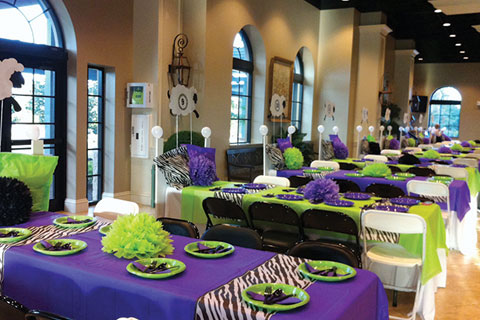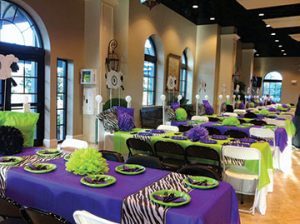
By Rachael D. Rowland, M.P.A.
In the early days, when settlers would start a new community in America, one of the first structures they built was the church. First, the location of the town square was established; then, the church was constructed in close proximity to this area. The church building was at the center of the community. It stood as a beacon for those near and far traveling to the town. It was often used for several other functions besides worship, including as a school.

Today, the tradition continues. We’re seeing more and more churches create their own communities within their local communities. They’re offering so much more than just spiritual guidance; churches are places where families can grow in all areas of their lives. Many churches offer athletic events for kids and adults, as well as education, day care, fellowship opportunities, food service — the list goes on!
As churches continue to reach out to their communities, they’re realizing the value of spaces that can be used in a multitude of ways. As such, many of today’s growing churches are leading the trend with multipurpose facilities.
Does a multipurpose make sense?
When deciding if a multipurpose facility fits your church’s needs, it’s important to identify if congregants are willing to be flexible with the space. Truly flexible design takes a lot of thought — not only on the church’s part, but especially on the architect’s.
If done right, the building will serve the congregation’s needs now and in the future. If done wrong, the congregation will fight over the space, or the church will be stuck limiting its ministries to the building’s limitations for years to come.
So, what does a flexible space look like? When meeting with today’s pastors, one issue that resounds is the need for these spaces to accommodate a variety of ministries. Typically, economics — how much money is available to build — incites many churches to build facilities that are versatile and can be used for many different types of ministry.

For this plan to work, the church must be sure to design the building with future changes in mind. Think about what purposes the building will serve now, and what future buildings you plan to build around this multipurpose facility. Make sure to account for the type of storage you need, traffic flow inside and outside the building, proximity to existing facilities and future buildings and, most important, the ministries the building will house.
Make sure to set up the infrastructure to accommodate future growth by designing the building with adequate power and additional conduit so that lines can be easily run when they’re needed. You might spend a little more on infrastructure than normal, but it will make adapting the facility in the future much more affordable and will simplify the process.
Another item to consider is the installation of the infrastructure for a future fire / sprinkler system. This way, major renovations won’t have to be done when it becomes necessary.
So much more than a “big box”
As church builders, one question we hear a lot is, “How can we avoid a ‘big box’ feel with our new multipurpose facility?” Our answer: interior elements.
When designing large, open spaces, it’s important to carefully choose lighting, colors, flooring and furniture. All these can warm the space, break it into areas, and make it feel more custom overall. Movable / adjustable amenities will make the space more adaptable today and for years to come.
The major benefit of multipurpose facilities is their flexibility. In terms of construction dollars, they give churches the most bang for the buck. Because one building serves multiple ministry needs, these spaces facilitate church growth.
Each church has different ministries, different needs, and comes in a different size. Yet, every church can find solutions to their space needs with a multipurpose facility.
Rachael D. Rowland, M.P.A., serves as marketing director for Churches by Daniels Construction in Broken Arrow, OK, which specializes in designing and building churches nationwide.



This makes so much sense. Thank you for the reminder. 🙂